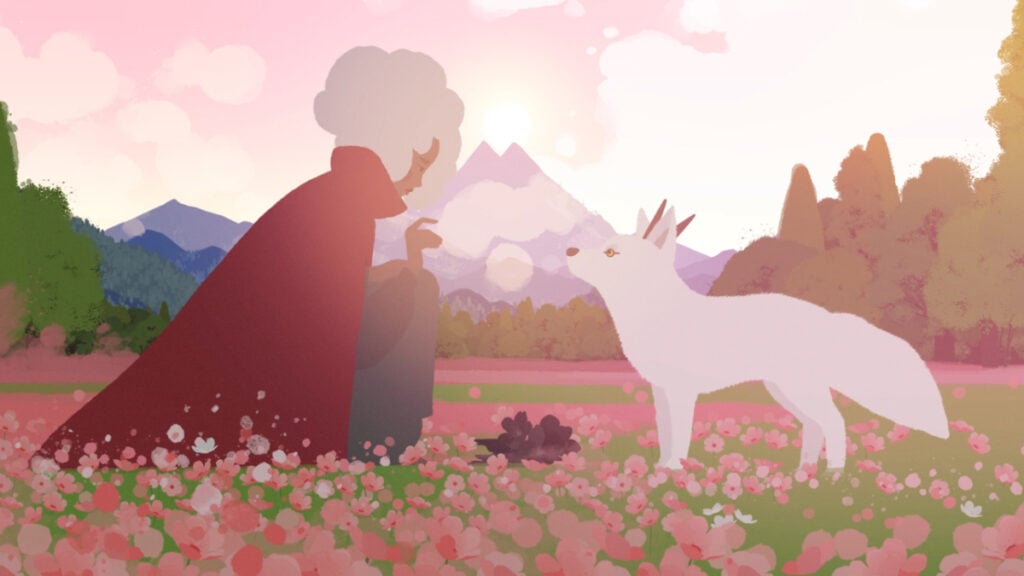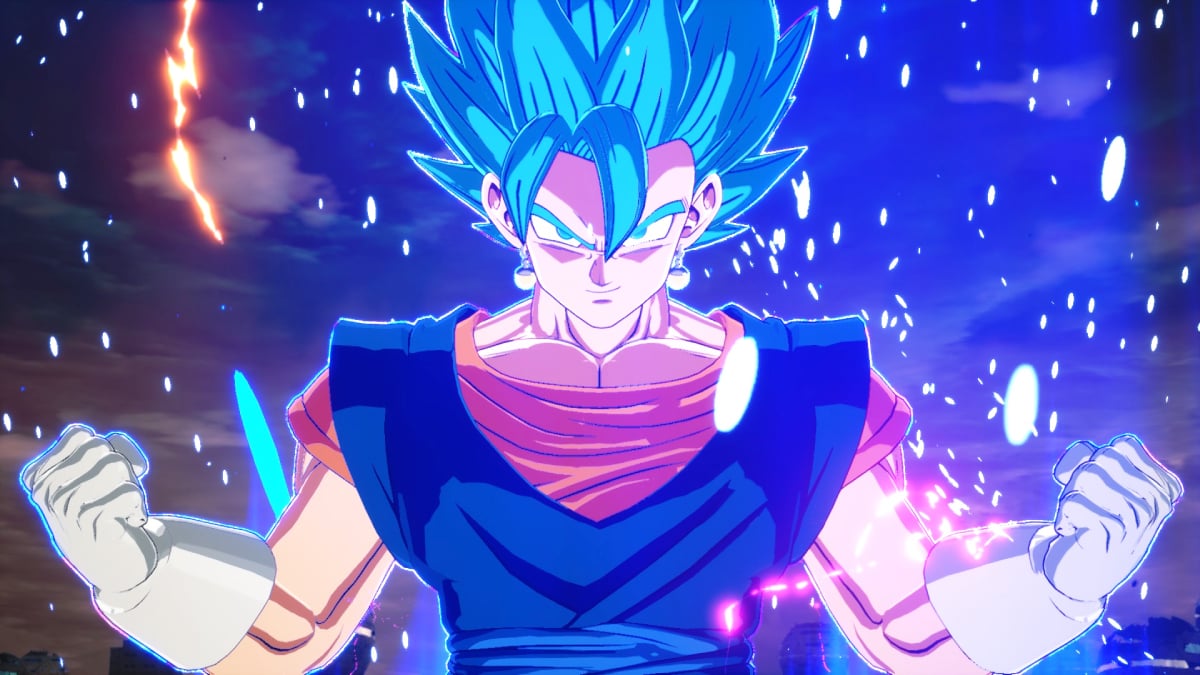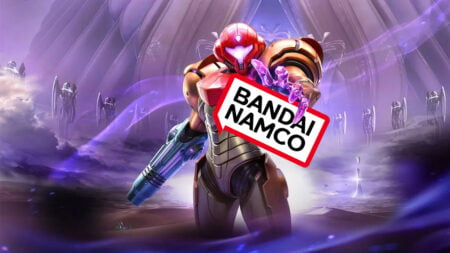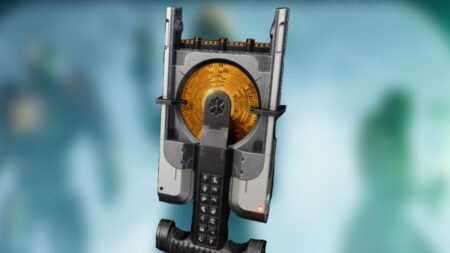Skip To...
Imagine a florist who, after a lifetime of study, assembles one perfect bouquet. There are no wilted petals here. There are no shriveled stems. Every color and scent adds a note to the floral harmony. It’s a handful of flowers, pleasing in their shapes and combinations, but so much more than that. For some players, that perfect bouquet was Ghost of Tsushima or Gris. For me, it’s Neva. My introduction to Nomada Studio is now my favorite action platformer. It’s the story of a woman, a wolf, and the end of the world, but also so much more.
Neva Review
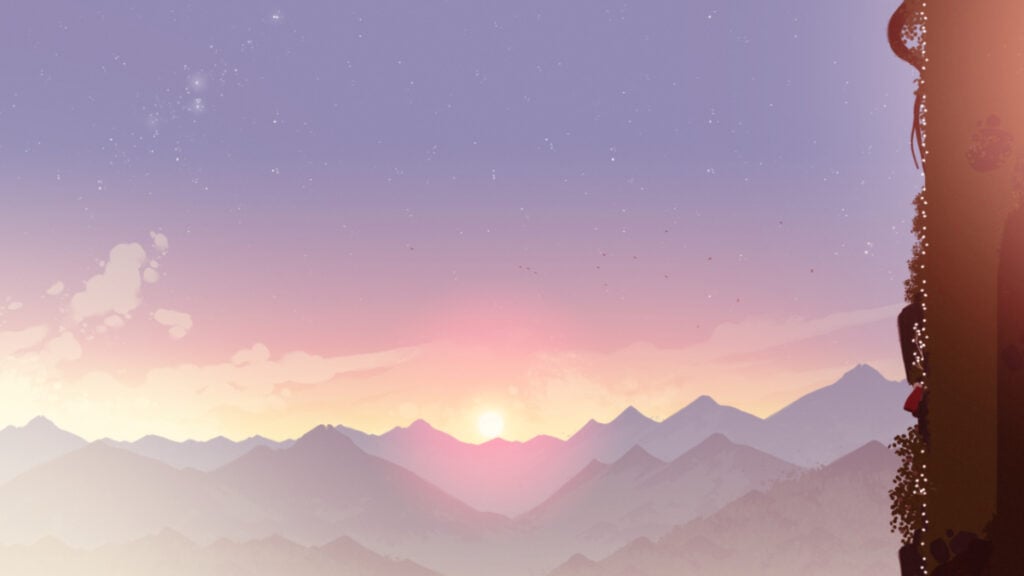
Neva is a brief and beautiful 2D action platformer, taking place from summer to spring in-game and totaling about half a dozen hours of playtime. You’ll wield a sword against the twisted creatures of a dying world, solve environmental puzzles, and make perilous leaps. Stop rushing. Pet the wolf. Don’t think about the gravity-defying trees or the weird masked things that sound like beetles and watch you in the woods. Everything’s fine, except everything’s not, and it might not ever be again. Neva is, somehow, the archetypal 2D action game while resembling almost nothing else in the genre.
Story: World, Woman, and Wolf
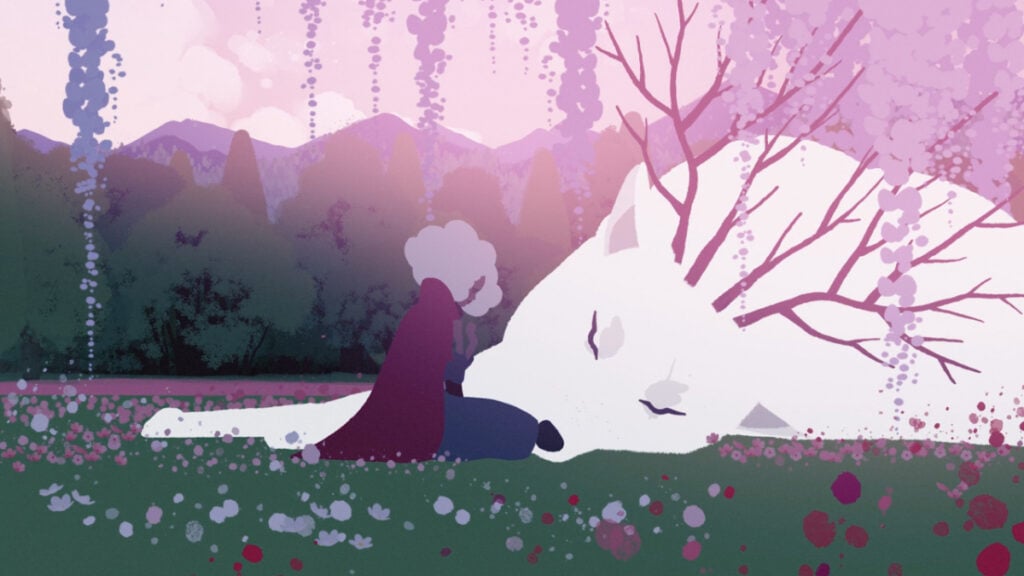
Alba is a warrior, and Neva is a wolf. The two meet when Neva is young, but their story together is long, and Time extends the same frail hand to wolves and women. Alba and Neva grow together throughout the game, though the wolf has the more dramatic transformation. At the start of summer, the first of the game’s four acts, Neva is a pup. Young and inexperienced, she’s shy in combat and clumsy when jumping. She’ll need to learn both, however, as the two are on a journey through a decaying world.
With minimal dialogue and even less overt exposition, Neva relies on environmental design, animations, and music to tell its story. There is considerable room for interpretation here. Still, certain themes are obvious. Alba and Neva’s relationship is very much that of parent and child, even if one has paws. Neva is growing and maturing in a world that’s losing its last toeholds on life. It’s all slipping away: time, safety, and physics as much as Neva’s small pup size and naiveté. None of it can last.
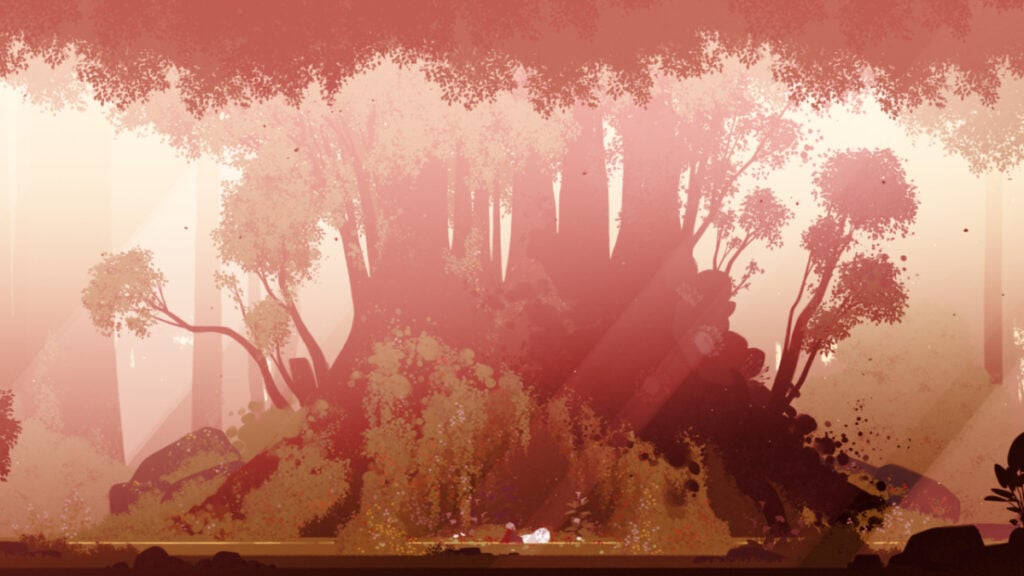
Games that tackle big subjects often struggle to find emotional authenticity, priming you with rousing instrumentals before clubbing you over the head with The Message. Neva‘s instrumentals are rousing, but there are no cheap manipulations here. The story hits the way it does because Neva is okay with 100 players walking away with 100 different experiences. It’s a parent’s memories of juice spilled on a new carpet, an ecological warning, and a samurai fable. I cried in the first 10 minutes, and I’m taking active Psychic Damage from my inability to say more about the plot. You don’t want it spoiled.
Neva pulls off a startling amount of characterization, considering the cast is, with minimal exceptions, effectively mute. Alba and Neva are trying to be brave in a world that’s coming apart at the seams, and when they can’t be brave for themselves, they’re brave for one another. Neva is the child of Okami and Lone Wolf and Cub, if said child earned a Master’s Degree in Color Theory, now back in the trenches of academia for a Doctorate in Cutting Monsters in Half. Like The Beginner’s Guide, Neva is the kind of game you can beat in a day but may spend the next decade thinking about.
Gameplay: A Family Affair
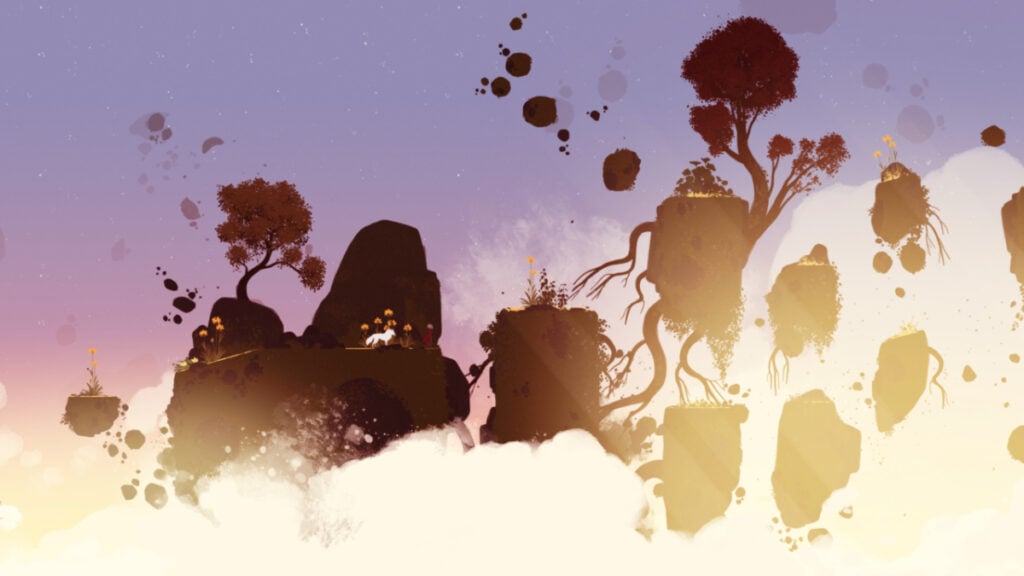
Each of Neva‘s four acts introduces new mechanics, but the core gameplay loop remains unchanged. As Alba, you explore, fight monsters, climb, jump, and otherwise action your way through enchanting forests and foreboding ruins. The mechanics are few. You have a double jump, a dash, a three-hit sword combo, and little else. Neva is not interested in serving you a cheap buffet: a nigh-infinite variety of culinary disappointments. Neva is one meal, perfected. In the beginning, Alba’s skills match those of Neva as a pup: promising but unformed. Every new area is a new opportunity to learn.
With white masks and bodies like black stage costumes, the enemies resemble the Tragedians of Pathologic 2. Sword combat against them feels like a Samurai Jack edit. Alba’s sword cleaves them apart with a few strokes, causing their split halves to disintegrate into leaves in mid-air. You have combos (capped at three hits) and a downward-piercing strike that can break weak terrain as well as the bodies of your enemies. Though these are humble ingredients for an action game, Neva switches up the enemies and terrain often enough to keep the fights engaging.
Platforming is as crucial a part of the experience as combat, and it received the same polish. Alba’s double jump and dash feel great. As Neva ages from a pup to a turbulent teen wolf and beyond, your options for battle and exploration expand. You’ll find moving platforms, teleporters, and other genre favorites. Neva doesn’t do much that’s new, but it does old things with a staggering level of polish and consideration. It’s not just a floating platform; it’s the exploded remnants of a gravity-defying tree soaring away in slow motion.
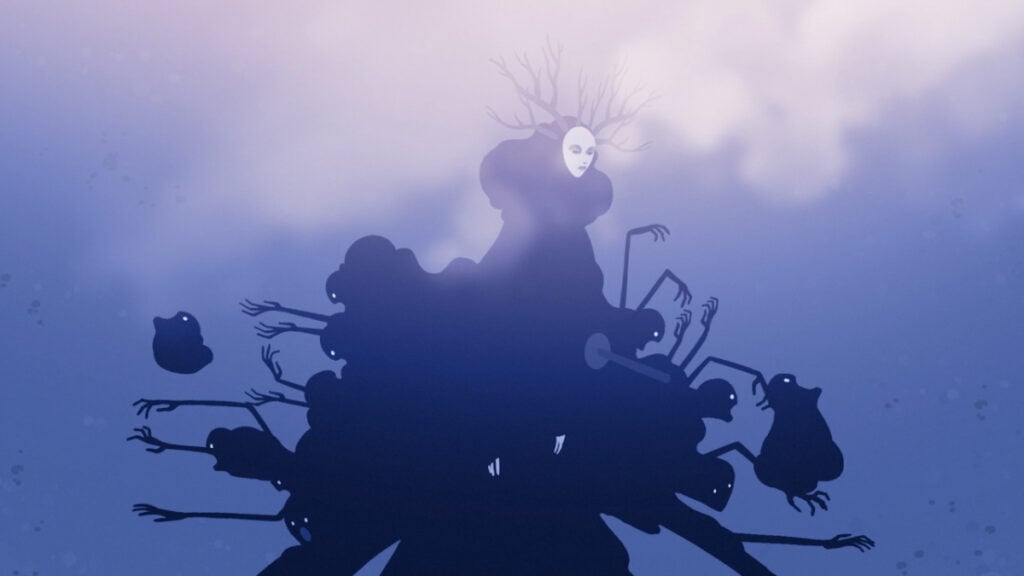
Neva’s personality shapes the game’s mechanics just as much as its story. When the wolf is young, she needs scratches and reassurance. She’s prone to trouble, missing jumps, and getting grabbed by masked creatures, requiring you to free her. She responds naturally to her environment, chasing butterflies, following interesting sounds, and behaving as you’d expect from a wolf still learning wolfy ways. If you’re getting The Last Guardian flashbacks, imagining Trico disobeying, it’s not like that. Young Neva’s inexperience never becomes frustrating, and the wolf only becomes more reliable as she grows.
If you asked me for a quick way to turn an otherwise enjoyable game into a boiling pot of Frustration Stew, I’d say add a constant AI companion. Then there’s Neva, which is somehow great, despite tethering your fate to that of a mystic white wolf with a penchant for tackling giant warthogs. Nomada Studio gives you just as much control over the Neva as you need. One moment the wolf is stretching in a beam of sunlight, the next she’s helping you execute precision leaps during a difficult platforming sequence.
A longer game would need more enemy types to remain engaging. Neva is short and sweet, introducing new abilities and challenges the moment you’ve mastered old ones. The default difficulty makes smart uses of its mechanics (such as the ability to regenerate health by damaging enemies), achieving a good balance for casual players. If you’d prefer to focus on the narrative, you can drop the difficulty, disabling death and enabling assist features such as auto-targeting for Neva.
Graphics & Audio: Storybook Life
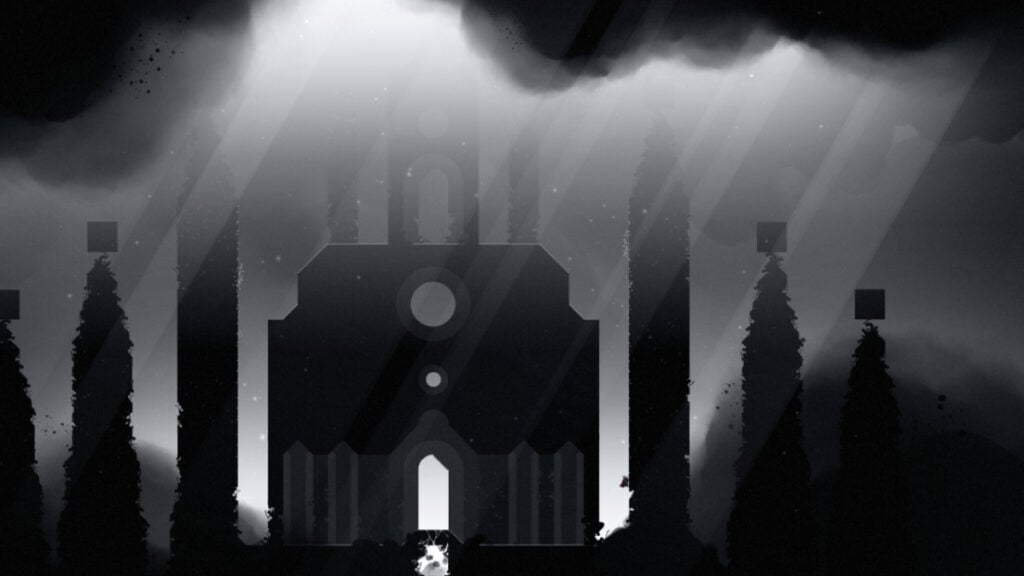
In the forest, the masked things scuttled about, watching you from the stumps and flowers where they fed. Now, beneath the earth, in the ruins of a monochromatic city long abandoned, they play a different part. Their bodies support crumbling pillars and brace broken fountains, a terracotta army now one with the landscape. As Neva trots ahead, there’s an uncomfortable cracking sound, a fallen body flexing its arm, one last death twitch 1,000 years in the making. The wolf doesn’t linger.
Neva‘s storybook visuals dispose of hard outlines and edges. There’s a watercolor softness to everything, yet it never detracts from the solidity of the ground beneath Alba’s feet or the edge of the steel in her hand. Some games look good in screenshots; others only feel right in motion. Neva always looks good, but pictures and videos don’t translate the experience well. The music, props, and particle effects combine with Alba’s responsive movements to create a vibe of cozy confidence. Like yeah, I could lay waste to monsters if I needed to, but I’m happy here watching the clouds with my pup.
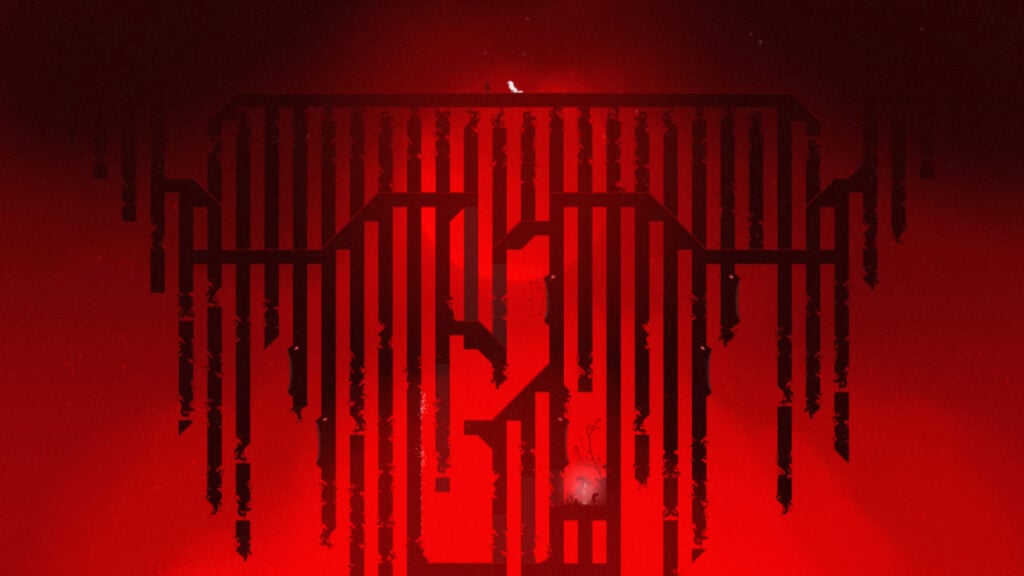
The sword strokes, monster chatter, and other audio are all worthy of praise, but there’s one thing we should pause to examine. You can call Neva with the press of a button, helping the wolf navigate or giving you her rough location when she’s lost. What’s remarkable is Alba’s audio changes based on the circumstances. Even though it’s always just the wolf’s name she’s repeating, Alba’s tone changes everything. Soothing, chiding, fearful, hopeful, desperate, and joyous: Neva’s name expresses more than Alba ever could through dialog. It’s a small detail, perfect in conception and execution.
The music helps texture Neva‘s already multi-layered world. The game has countless opportunities for emotional string-pulling, but its instrumentals never feel like they’re trying to bait a tear. It doesn’t hurt that the game makes exceptional use of parallax backgrounds, lending tons of life and depth to otherwise simple scenes. Forget the fighting and platforming
— most of the time, Neva‘s real appeal is the chance to experience a scene or landscape in ways you never have before. Given that two of the game’s big themes are ecological destruction and the loss of familiar things, it’s fitting.
Conclusion: A Perfect Bouquet
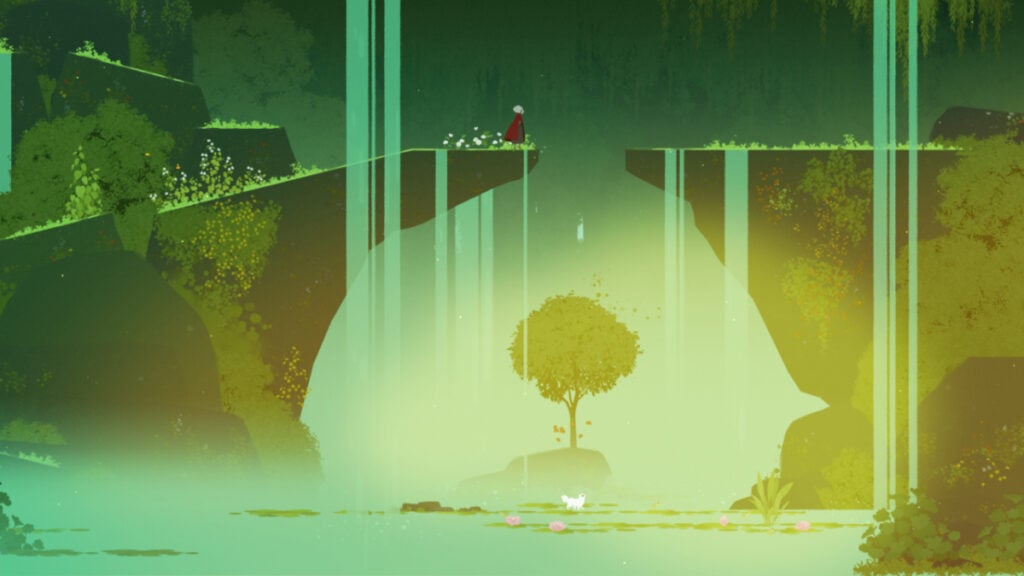
I experienced no bugs or crashes during my time with the game. Saying Neva is an exceptional 2D action game is like saying Starry Night is an exceptional painting of the sky. It’s not wrong, just reductive. You can finish it in a few hours, but that’s a poor measure of its value. The memories of it are apt to follow at your heels like a certain young wolf. Neva is a perfect bouquet, assembled from choice cuttings, and sitting beside it makes me feel a little more human and a little more seen. Also, you can pet the dog.
Review copy received from Publisher.
Neva (PC Review)
Neva is a lush and responsive 2D action platformer that delivers an enthralling world and unforgettable emotional experience.
Pros
- Incredible painterly artstyle
- Polished and rewarding platforming and combat
- Profound and emotional storytelling
Cons
- Enemy variety is somewhat limited
- Some puzzle solutions could be clearer

